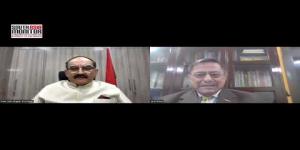Teacher shortcomings reflecting on quality of education in rural India, says UNESCO report
There are nearly 120,000 single-teacher schools in the country, of which an overwhelming 89 per cent are in rural areas, according to a UNESCO report released on Tuesday. The report projects that India needs 1.1 million additional teachers to meet the current shortfall
There are nearly 120,000 single-teacher schools in the country, of which an overwhelming 89 per cent are in rural areas, according to a UNESCO report released on Tuesday. The report projects that India needs 1.1 million additional teachers to meet the current shortfall. The findings in the report, State of the Education Report for India-2021, are largely based on analysis of Periodic Labour Force Survey (PLFS) and the Unified District Information System for Education (UDISE) data, according to The Indian Express.
A team of experts from Tata Institute of Social Sciences, Mumbai, led by Prof Padma M Sarangapani collaborated with a UNESCO team in preparing it.
Based on calculations of PLFS 2018-19 data, the report points out that across states there are 1,10,971 single-teacher schools, which translates to 7.15% of 11.51 lakh schools, employing 95 lakh teachers. “89 per cent of these single-teacher schools are in rural areas. States with a high percentage of single-teacher schools include Arunachal Pradesh (18.22 per cent), Goa (16.08 per cent), Telangana (15.71 per cent), Andhra Pradesh (14.4 per cent), Jharkhand (13.81 per cent), Uttarakhand (13.64 per cent),
Madhya Pradesh ( 13.08 per cent), Rajasthan (10.08 per cent),” the report states.
In a release, UN resident coordinator in India, Deirdre Boyd, said that out of 17 sustainable development goals (SDG), the one on education was “like a raft that keeps all SDGs afloat”.
Sarangapani said gender ratio in professions is “overall balanced”, with women teachers accounting for 50 per cent of the total. However, there are inter-state, urbal-rural imbalances.
The glaring constraints affecting the teaching profession in India, as highlighted in the report, have a direct bearing on quality of education. Besides vacancies, low wages of teachers, especially in private schools, needs attention. As the report says, “It is likely that a teacher's income needs to be supplemented by other means, and salaries of women employed in private schools are a secondary income source in the family.”
“The proportion of women teachers in rural locations is less than that in urban locations,” the report says. “In rural areas, 28 per cent of primary school teachers are women versus 63 per cent in urban areas. However, early childhood education teachers are predominantly women, and 88 per cent of them are in rural areas. At the secondary school level, 24 per cent teachers in rural areas are women, versus 53 per cent in urban locations.”
The proportion of teachers employed in the private sector grew from 21% in 2013-14 to 35% in 2018-19, it said. It said requirement of teachers in these schools fell by 10%, as against 6% in government schools. The Right to Education Act stipulates that the pupil-teacher ratio (PTR) should be 30:1 in classes 1-5 and 35:1 in higher grades.









Post a Comment